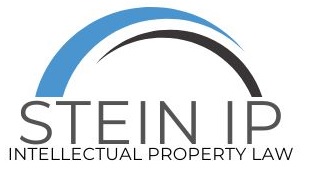- HOME
- > Blog Main Page
- > News
- > New USPTO Trademark Guidelines: Three Things You Should Know
New USPTO Trademark Guidelines: Three Things You Should Know
By Judy Lu
New USPTO Trademark Guidelines became effective on February 15, 2020. The revised examination guidelines as the final rule supersedes all previous guidance, and there are three major changes you should know.
Email address request
The requirement of email addresses is a big change in these new examination guidelines. The new rule requires new trademark applications filed on or after Feb. 15 to include an email address of the applicant for receiving a filing date. If an applicant or registrant is represented by an attorney, the attorney’s email must be included as well. The trademark owner’s email address “cannot be identical to the listed primary correspondence email address of their attorney.”
The USPTO suggests applicants or attorneys to create an email address exclusively for communication and correspondence between the USPTO, but personal email addresses and business email addresses are acceptable.
The email address will not appear in the “Trademark Status and Document Retrieval (TSDR) status tab but in the filed document in the TSDR documents tab.
Specimen webpage URL requirement
For specimen trademark applications filed on or after Feb. 15, the USPTO requires applicants to provide the URL of the specimen and the date the webpage was accessed or printed for verification. The reason for requesting the URL is because of the “transitory nature of Internet postings.” This requirement was also applied to further specify items that are not proper specimens.
The required date can be the date presented anywhere on the specimen webpage. Applicants can include the URL in the TEAS (Trademark Electronic Application System) form, or add it in a verified statement under 37 C.F.R. §2.20 or 28 U.S.C. §1746 in a later-filed response.
Exceptions for paper submissions
The USPTO published a final rule on July 31, 2019, which requires all applicants to fill trademark submissions online by using TEAS. A few exceptions include “grandfathered” applications. However, if these “grandfathered” applications were filed by using TEAS, these applications are not exempted anymore.
There are more exceptions from submitting electronically applied to applications filed on or after Feb. 15. First of all, if applicants, registrants or parties are from a country that “is a member of the Trademark Law Treaty” but “not the Singapore Treaty on the Law of Trademarks (STLT), they do not need to submit applications electronically. These countries only include Bahrain, Bosnia and Herzegovina, Chile, Colombia, Costa Rica, Cyprus, Czech Republic, Dominican Republic, Egypt, El Salvador, Guatemala, Honduras, Hungary, Indonesia, Monaco, Montenegro, Morocco, Nicaragua, Oman, Panama, Slovenia, Sri Lanka, Turkey, and Uzbekistan.
Secondly, if a specimen is for a non-traditional mark, such as a scent mark, applicants should submit the appropriate TEAS form and then mail the specimen, since examining attorneys need to smell it.
Reference
Examination Guide 1-20 (Revised) https://www.uspto.gov/sites/default/files/documents/TM-ExamGuide-MEF-1-20.pdf

TAGS:
RECENT POSTS
